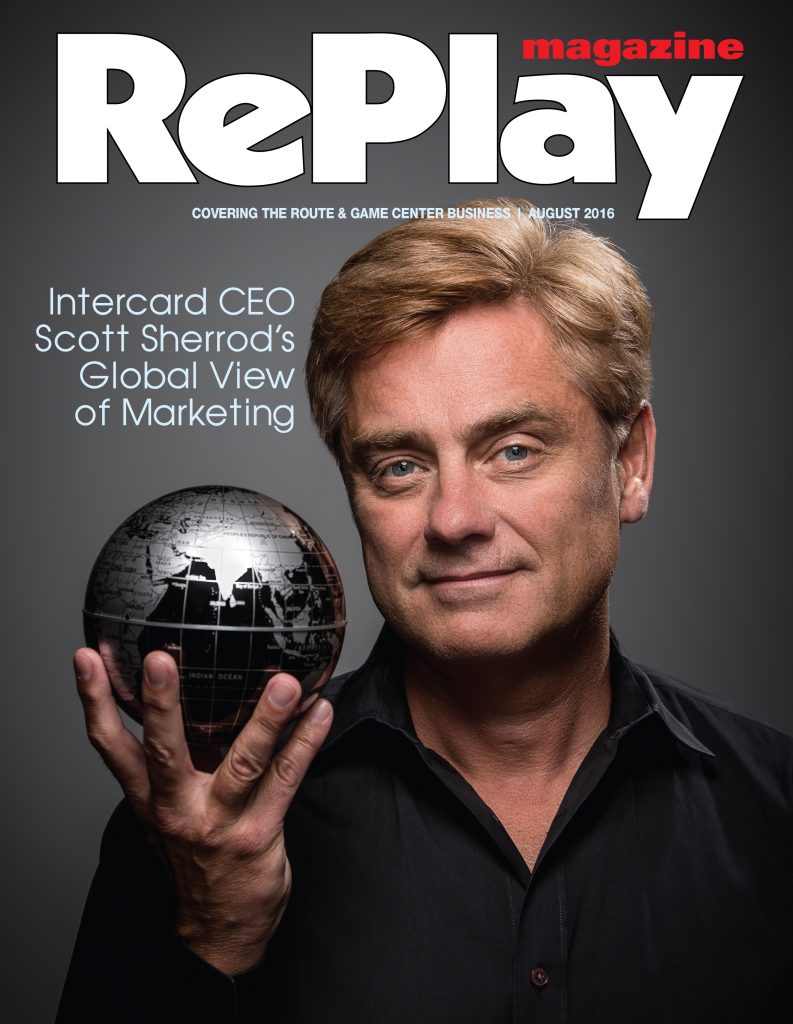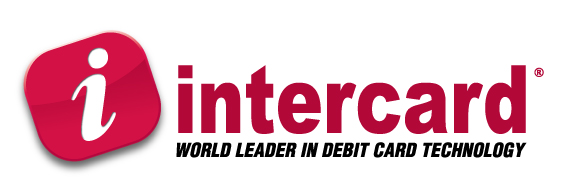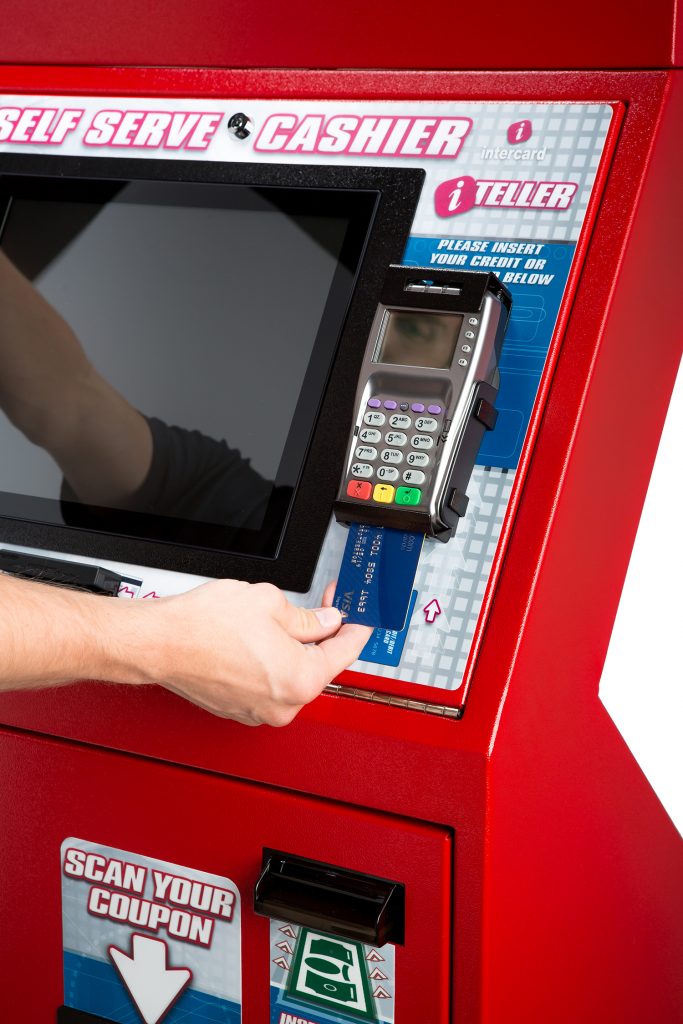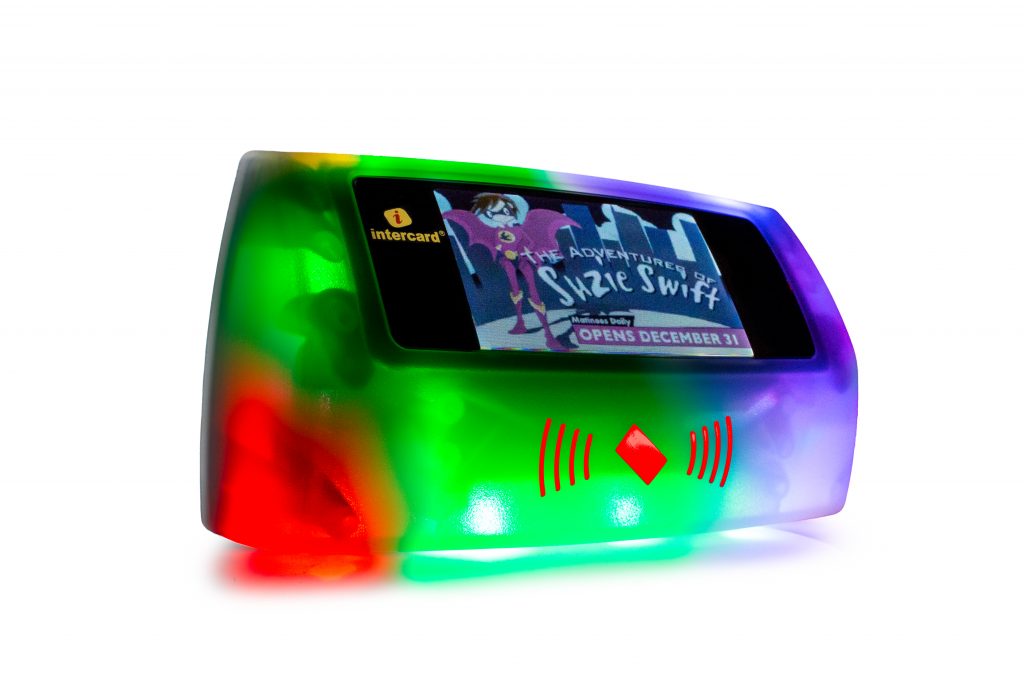 Debit Payment:
Debit Payment:
Much More Than a Simple Swipe
Intercard Evolves Alongside the Market with New Focus on Global Marketing
by Dan McGrath
It’s understandable that Intercard’s CEO Scott Sherrod often considers the question of exactly what business his company is in now. Anyone working in the tech world sees firsthand the rapid pace of change that is that industry’s lifeblood; it is a constant stream of new software and hardware evolving to meet the dynamic and constantly developing needs of the marketplace.
Debit payment technology is no exception to that endless transformation. That question keeps Intercard thriving in a globalized and digitized market that has completely changed since Sherrod’s father Ray founded the firm back in 1979.
“I think we’re primarily a global marketing company now,” said Scott Sherrod, who leads the St. Louis-based provider of payment solutions that has customers in six continents, six sales offices around the world, and customer service centers in North America and Asia.
Scott’s father was an electrical engineer who graduated from Washington University in St. Louis. After creating a debit card system for photocopying transactions in universities and colleges throughout the U.S., Ray began doing business with a growing number of retail photocopy stores. He then caught the attention of some savvy game center operators who saw the Intercard readers in action and asked if he could develop a system to eliminate cash payment for their arcade games.
“This is where Intercard’s roots as a marketing company began,” said Scott. “We empowered a business (dominated by family game centers and bowling centers) where marketing and promotions are paramount with the tools to promote, track and manage their business better, while eliminating the costs, labor and downtime associated with tickets and tokens. In today’s language, our technology would be called ‘disruptive,’” Scott advised.

SEGA GameWorks was an early user, putting Intercard’s early system into multiple locations. The first international customer was a chain of venues in Mexico, and soon after that, the company went global. Today, there are more than 3,500 sites in more than 70 countries using the Intercard system.
According to the company, understanding the nuanced differences in the many countries and regions where they operate them has helped them continue to grow. Knowing that a customer in the Middle East will go to a center a few times a week compared to a few times a year for players in U.S. markets helps Intercard develop different strategies and tactics that they pass on to their clients in detail.
Scott can point to a number of recent technology advancements that started in one part of the world and migrated with Intercard to other regions.
“The first ‘timed play’ started in the U.S. with Fun Fest in Addison, Texas, in the 1990s (now BowlMor Dallas). Since then, we’ve been able to teach our international clients its benefits. Another example is the use of NFC and RFID technologies and, of course, using smart phones as part of the payment and play process. This really caught on in Asia, and we’re helping take it to other regions, including Namco Entertainment’s Level 257 venue in suburban Chicago.”
Sherrod explained that his company was the first in the FEC market to offer magnetic swipe, RFID, and NFC technology in a single reader with its iWave Reader and iWave Nano products, introduced in 2015. Intercard was also the first provider to offer cloud-based hosting to their clients in the FEC and bowling center sector. Shortly after introducing this feature, nearly all their clients throughout the world were taking advantage of it, Scott declared.
“I think too many small, single-location operators have this misperception that the cloud is good only for the big, multi-unit operators. That’s far from the truth. The greatest majority of our customers are single-site owners who prefer an advanced card system. Intercard manages, updates and maintains the database for them,” Scott said. “And they love the convenience. One of our clients, Marion Paul at Fannie Farkle’s arcade in Gatlinburg, Tenn., likes the ability to check in on her venue’s numbers remotely anytime, without having to bother her team on the floor.”
Scott Sherrod also makes it a priority to hire and retain what he considers “the best talent in the industry.” Today, Intercard has an internal development group that includes six software engineers, one firmware engineer and one electrical engineer, most of them boasting decades of experience.
Intercard engineers use the “scrum” approach to project management. Scrum assumes that a problem or opportunity cannot be fully defined, and focuses instead on maximizing the team’s ability to deliver quickly, to respond to emerging requirements and to adapt to evolving technologies.
Among the reasons that Intercard is able to attract and retain top technology talent is the same as bigwigs of the tech world like Apple.
“First, we take care of our people,” Scott advised. “Second, our employees enjoy their jobs. It’s not just any programming or coding job for them. Some of them have been with us for over 19 years. The art and science of designing a device or hardware that serves our clients’ needs, as well as being intuitive and easy for their customers, is a fun challenge.”
Intercard’s work isn’t over once they make a sale. To ensure products are maximizing the revenue potential for clients, as well as creating a positive experience for the player, Intercard will occasionally conduct consumer observation research by actually going to an arcade and watching customers interact with the products. After noticing customers weren’t taking the receipts printed after each transaction at an Intercard teller, Scott implemented a host of enhancements that ultimately fixed the problem.
Intercard’s CEO wants customers to know that researching, buying and installing a debit card system is just the beginning. He hopes that customers realize the best price on a system may not ultimately end up being the best investment, once service and support are taken into account. “Intercard offers comprehensive customer service and support for its customers, not just to keep the system operating, but also to extract the maximum value from it,” he says.
“Basically, what we’re doing after the sale is making sure everything runs properly and that they get the most out of their system – from both a computing and operational perspective, which, ultimately for me, is about increasing my customers’ bottom lines.” The company also offers training on their equipment to help locations understand the profitability of each system and each game.
“Our system is so much more than the hardware. If the senior managers don’t understand the profitability of each game, the system doesn’t do much good. We sit down with senior managers, such as the owner, GM or shift supervisors, to show them what types of reports can give them same-day and historical profit and loss information,” Scott explains.
Call Center in Asia
In early 2016, Intercard opened a new call center in Subic Bay, Philippines, to provide more convenient phone-based customer service to Intercard client-businesses in Asia and Australasia. The new center is a result of Intercard’s recent growth in China, Australia and New Zealand, where sales have doubled annually for the past four years. The center has five full-time technicians, trained to support all aspects of Intercard hardware and software.
After 37 years in the business, Intercard has seen its fair share of changes. Scott Sherrod emphasizes that when debit card technology was first introduced, the main benefits were cash control and labor savings. Those benefits continue, but Sherrod believes the future of the industry will come from such additional tools like customer tracking, retention, up-selling and more.
“So yes, because of the technological advances made by Intercard, we as a company are morphing into a marketing company of sorts, operating on a global scale. And the new products we’re looking at – phone-based or otherwise – will make all of our clients, domestic or international, large or small, be better marketers themselves,” says the CEO.
He encourages RePlay readers to come say hello and see what Intercard has to offer at IAAPA in November, where they will show the latest in their line of marketing technology tools in action. For more details on the company now, visit www.intercardinc.com.

SIDEBAR:
New Products & Features from Intercard
Intercard i3 Reader
Intercard’s i3 Reader is the first reader introduced to the amusement market that’s capable of accepting magnetic stripe or RFID/NFC proximity cards/wristbands. This unique characteristic gives client-businesses the best of both worlds: The option to completely switch their business from magnetic stripe readers to RFID/NFC, or to phase in the new technology as it becomes more affordable. For those who don’t want to use phones, this hybrid card reader is a great, cost-effective option. Other features include: Full-color screen displays customer’s photo in real time, a programmable LED board, Ethernet or wireless capabilities, PCI compliant for accepting bank credit cards, plus it’s an all-in-one unit with no external controller, power supplies or additional hardware.
Intercard iReader Eclipse
The iReader Eclipse with Wi-Fi is Intercard’s biggest seller in the U.S. Customers like the standard wireless network and the customization that they can implement on its graphical display. The interactive graphics, a color screen and a large display make it just as popular with player-guests as it is with owners and managers. Plus, it offers the strategic cash management, marketing, reporting and revenue enhancing benefits that the Intercard system has made famous.
Integration with Micros POS
Intercard now provides its systems fully integrated with Micros Point of Sale (POS) software and hardware. Among the benefits, this integration eliminates the labor-intensive step of rekeying information by the business’ accounting office, and managers have access to sales and activity numbers instantaneously. Intercard says they are the first payment solutions provider to the FEC and bowling center categories offering such a system. Before the company’s integration with Micros, a business bookkeeper would get reconciliation information from Intercard in a printout, at which point the information had to be keyed in somewhere. Micros makes all that digital and instantaneous. Plus, all of that information feeds into the back end of the POS’ reporting apparatus. The Intercard system with Micros POS can do account histories, add value and allow guests to use the card as a payment for food and beverage. Plus, Intercard’s tellers are also fully integrated.
For more info call Intercard at 314-275-8066.

